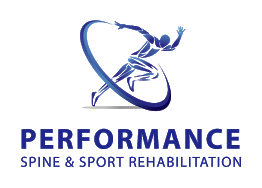Inflammation: The Elephant In The Room Forget RICE. A New Approach to Treating Acute Injuries STEPHEN M SWARINGEN, DC 08/30/18
Part 2: Inflammatory Phase Management
In Part 1 we covered the three phases of healing and gave an overview of the processes taking place within the body after an injury. Today, we will dive into the management of acute injuries in the inflammatory phase. The trauma induced injury occurs, which stimulates a physiological reaction where the body imports a series of hormones, chemicals, and cells to aid in protecting and repairing the damaged tissues. When you experience an injury, it is critical that we manage this response appropriately. For as long as I can remember, RICE, (Rest, Ice, Compress, Elevate) has been the gold standard of care. However, recent studies suggest that RICE is not the most beneficial way to bounce back from the injury. REST is commonly understood and practiced as the complete immobilization of the injured area. This is a problem because inflammation and swelling are moved by the mechanically activated lymphatic system. When we immobilize the area of injury, we allow the inflammation to stagnate in the tissues causing increased pressure/pain, limiting the importation of new hormones, chemicals, and cells leading to the rapid loss of mobility and strength of the joints and tissues. Movement is key in evacuating inflammation, importing healing factors, and preventing loss of range of motion to the injured joint. ICE has been the go to for everyone from doctors and athletes to parents. Ice stimulates a vasoconstrictive response, decreasing the flow of blood to tissues. Why would we want this? The blood carries oxygen and key nutrients to tissues, forms blood clots to avoid excess bleeding, and evacuates waste to aid in tissue recovery. By closing down this transport we are creating a blockade, stranding the tissues most in need. On the other hand, heat stimulates vasodilation which promotes circulation and the migration of inflammatory signals and healing chemicals to the site of the injury. COMPRESSION is a component that may be appropriate with limitation. By applying outside compression, we are controlling the rush of inflammation to the tissues and we can aid the body in organizing a flow. I believe compression can be applied during specific times throughout the phases of healing to assist the injured tissues. For instance, during the acute inflammatory phase we can use compression for situations such as excessive standing and walking. When working with an athlete who is training through an injury we will provide bracing/compression during practice and games. ELEVATION goes hand in hand with rest and the theory that by immobilizing and elevating the injured area, gravity will act on the swelling and pull the fluid away from the tissues. My approach is much more involved. I believe movement and muscle activation is more effective in pumping swelling and inflammation out of the tissue, while preventing the joint from becoming restricted. The modern approach to acute injury care is focused on restoring range of motion, initiating lymphatic drainage, and stimulating the nervous system in order to expedite the healing process. This is done with passive modalities such as electric stimulation and heat, joint mobility performed by the doctor, and phase one active rehab utilizing range of motion exercises, and light static stretching. The next time you experience an injury, remember that time is of the essence. Your goal is not just to feel better, but to recover completely to prevent future pain and discomfort.



